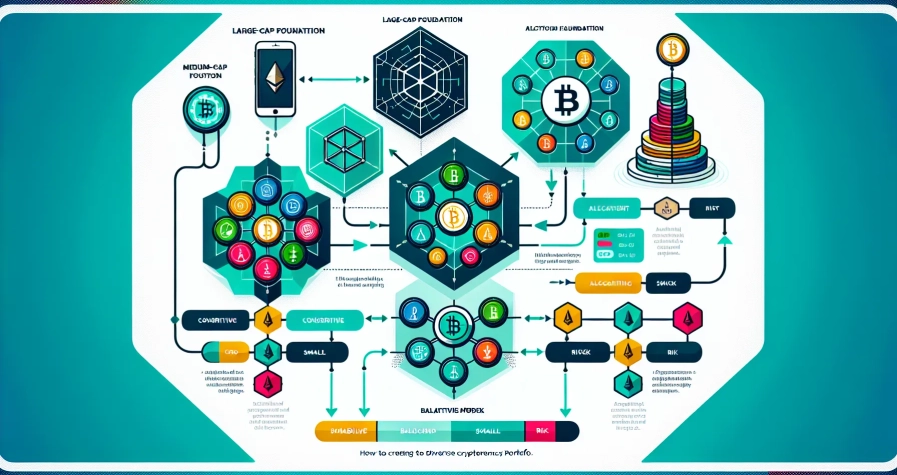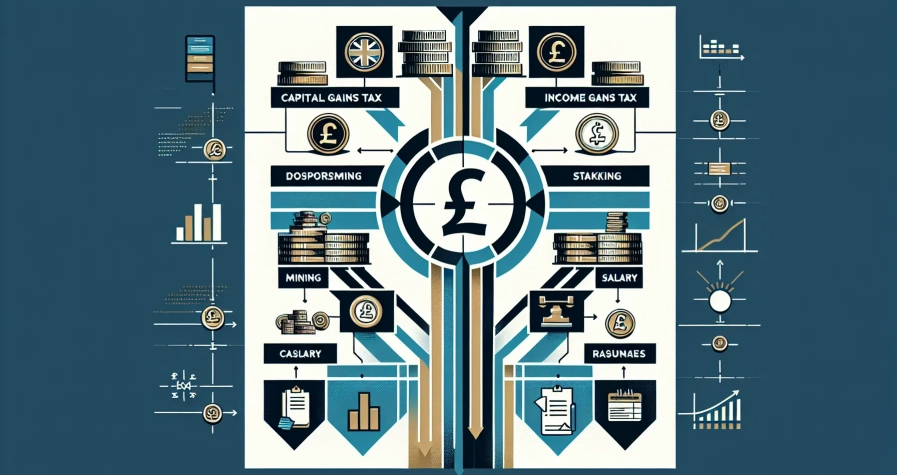The decentralised promise of Web3 comes with a hidden cost: users are entirely responsible for their own security. Unlike traditional banking, where fraud departments and customer support teams can reverse suspicious transactions, blockchain networks offer no safety net. Once a wallet connects to a malicious decentralised application (dApp) and signs a transaction, the damage is often immediate and irreversible.
Crypto theft isn’t always the work of sophisticated hackers breaking through firewalls. More often, it’s a simple case of users unknowingly granting access to fraudulent platforms. Exit scams, honeypot contracts, and phishing clones proliferate in the Web3 ecosystem, preying on those who click “connect wallet” without a second thought. The question isn’t whether threats exist, it’s whether users know how to spot them before it’s too late.
This article outlines ten critical red flags that should stop anyone in their tracks before connecting a wallet to any dApp. From suspicious team credentials to interface design quirks, these warning signs can mean the difference between a safe transaction and total asset loss.
Key Takeaways
- Always verify the development team’s identity before connecting your wallet to any dApp, as anonymous or unverified teams pose significant exit scam risks.
- Check for third-party smart contract audits from reputable firms like CertiK or OpenZeppelin to ensure the dApp’s code has been independently reviewed for vulnerabilities.
- Scrutinise permission requests carefully and never grant unlimited token access, as excessive permissions are a hallmark of malicious dApps designed to drain wallets.
- Research the dApp’s online reputation across social media and crypto communities, as legitimate projects have active user engagement and transparent communication channels.
- Examine URLs closely to avoid phishing attempts, and always bookmark official dApp addresses rather than clicking links from emails or social media.
- Be wary of unrealistic return promises or guaranteed yields, as legitimate DeFi platforms clearly disclose risks and never guarantee profits in volatile markets.
Why Wallet Security Matters in the Web3 Space

Wallets are the gateway to everything in Web3. They hold private keys, authorise transactions, and interact with smart contracts across decentralised networks. When a user connects their wallet to a dApp, they’re not just logging in, they’re granting the application varying levels of control over their digital assets. This is fundamentally different from Web2, where compromised accounts can often be recovered through centralised support channels.
In decentralised systems, there are no intermediaries to appeal to. No customer service team can freeze a suspicious transaction or restore stolen funds. Blockchain’s immutability, one of its greatest strengths, becomes a liability when assets move into the wrong hands. Once a transaction is confirmed on-chain, it’s permanent. This reality places the entire burden of security on individual users.
The risks aren’t theoretical. Exit scams have drained millions from unsuspecting users, and malicious smart contracts continue to exploit gaps in user awareness. Phishing attacks, where scammers clone legitimate dApp interfaces to harvest wallet credentials, have become alarmingly common. The decentralised ethos of Web3 empowers users with control, but that control is meaningless without the knowledge to wield it safely.
Understanding red flags before connecting a wallet isn’t paranoia: it’s due diligence. Every connection request is a potential attack vector, and vigilance is the only defence in an ecosystem where users are their own final line of protection.
1. Unverified or Anonymous Development Team
Transparency starts with the people behind a project. Legitimate dApps are usually backed by teams willing to attach their names and reputations to their work. When developers remain anonymous or hide behind pseudonyms with no verifiable history, it raises an immediate question: what are they hiding?
Anonymity in Web3 isn’t inherently malicious, many respected projects have pseudonymous founders. But there’s a difference between a well-known pseudonym with a documented track record and a faceless entity that appeared overnight. Projects with unverified teams are statistically more prone to exit scams, where developers drain liquidity pools or abandon the project after raising funds.
Before connecting a wallet, users should verify whether the development team has public profiles on LinkedIn, GitHub, or reputable crypto forums. Have they worked on other projects? Are there interviews, AMAs, or conference appearances that lend credibility? If the team’s online presence is non-existent or consists solely of anonymous Telegram handles, caution is warranted.
Some scammers even fabricate team members, using stock photos or stolen identities. A reverse image search can quickly reveal whether a “CTO” photo has been lifted from a corporate headshot library. In decentralised finance, trust is hard-earned, and anonymous teams haven’t earned it. Users should demand transparency, and if a project can’t or won’t provide it, they should walk away.
2. Missing or Incomplete Smart Contract Audits
Smart contracts are the backbone of dApps, executing transactions automatically based on coded logic. But code isn’t infallible. Bugs, vulnerabilities, and exploitable loopholes can, and do, exist. That’s why third-party audits from reputable security firms are essential for any serious project.
An audit involves independent experts reviewing the smart contract’s code to identify vulnerabilities before it goes live. Firms like CertiK, Trail of Bits, and OpenZeppelin are recognised names in the space, and their audit reports are publicly available. If a dApp hasn’t been audited, or if the audit is incomplete or conducted by an unknown entity, users should treat it as a significant risk.
Some projects claim to be “audited” but provide no proof. Others commission audits but ignore the findings, leaving critical vulnerabilities unpatched. Users should always verify that an audit report exists, is recent, and addresses the current version of the smart contract. Outdated audits are nearly useless, as code changes after an audit can reintroduce risks.
Even audited contracts aren’t foolproof, high-profile hacks have occurred even though thorough reviews. But the absence of an audit is a glaring red flag. It signals either a lack of resources, a rushed launch, or, in the worst cases, an intentional disregard for user safety. Users connecting wallets to unaudited dApps are essentially beta-testing code with their own funds on the line.
3. Excessive Permissions Requested During Connection
Not all wallet connections are created equal. When a dApp requests permission to interact with a wallet, it should only ask for what it needs. A decentralised exchange, for example, might need approval to swap a specific token. It doesn’t need unlimited access to every asset in the wallet.
Excessive permissions are a hallmark of malicious dApps. Scammers design smart contracts that request blanket approval, allowing them to drain wallets at will. These permissions often appear during the connection process, buried in technical jargon that most users glance over before clicking “approve.” Once granted, the dApp can move tokens without further consent.
Users should scrutinise every permission request. Does the dApp need access to all tokens, or just one? Is the requested spending limit reasonable, or is it set to “unlimited”? Most legitimate platforms allow users to set custom approval amounts, limiting exposure even if the dApp is later compromised.
Wallet interfaces like MetaMask have improved permission transparency, but the onus remains on users to read and understand what they’re approving. If a dApp requests permissions that seem disproportionate to its stated function, such as a simple NFT gallery asking for token spending rights, it’s a red flag. Better to decline the connection and investigate further than to risk irreversible asset loss.
4. Poor or Non-Existent Online Reputation
Reputation is currency in Web3. Established dApps have active communities, social media presence, and a trail of user feedback. When a project has little to no online reputation, or worse, a trail of complaints and warnings, it’s time to reconsider.
Before connecting a wallet, users should search for mentions of the dApp on platforms like Twitter, Reddit, and Discord. Are people using it? Are there discussions about its features, or is the only chatter cautionary? Crypto communities are quick to flag scams, and a simple search can reveal whether a dApp has been flagged by security researchers or warning services.
Some projects manufacture fake credibility through purchased followers, bot-generated comments, or shill accounts. Red flags include social media profiles with high follower counts but minimal engagement, generic replies to user queries, and suspiciously uniform positive reviews. Authentic communities have organic conversations, disagreements, and diverse opinions.
Absence of reputation is just as concerning as a bad one. A project that’s been live for months but has no community activity, no media coverage, and no user testimonials is either irrelevant or intentionally flying under the radar. Either way, it’s not a safe bet for wallet interaction.
5. Suspicious Domain Names and URLs
Phishing is rampant in Web3, and one of the easiest attack vectors is a fake website. Scammers register domains that closely mimic legitimate dApps, often changing a single character or adding a hyphen. Users who don’t scrutinise URLs can land on clones designed to steal wallet credentials or trick them into signing malicious transactions.
Typosquatting, registering domains with common misspellings, is a favourite tactic. If the official site is “uniswap.org,” a scammer might register “unisvvap.org” or “uni-swap.com.” These clones often replicate the original site’s design perfectly, making visual detection nearly impossible. The only giveaway is the URL itself.
Users should bookmark official dApp URLs and access them exclusively through those bookmarks. Clicking links in emails, social media DMs, or unfamiliar websites is risky. Even search engine results can be manipulated through paid ads that place phishing sites above legitimate ones.
Another warning sign is a mismatch between the domain and the dApp’s branding. If a well-known project suddenly operates from a strange or generic URL, it’s likely a phishing attempt. Checking the dApp’s official social media for verified links is a quick way to confirm legitimacy. In Web3, a single character in a URL can mean the difference between a safe interaction and total wallet compromise.
6. Lack of Clear Documentation or White Paper
Serious projects document their work. White papers, technical documentation, and user guides aren’t just formalities, they’re essential for transparency and user trust. When a dApp lacks clear documentation or provides only vague, poorly written descriptions, it’s a red flag.
A white paper should explain the project’s purpose, technology, tokenomics, and roadmap in detail. It should be coherent, well-structured, and free of obvious errors. If the white paper is riddled with typos, lacks technical depth, or makes grandiose claims without evidence, it’s likely the product of a rushed scam or an inexperienced team.
Some fraudulent projects plagiarise white papers from legitimate dApps, changing only the branding. A quick comparison or search for duplicate text can expose these fakes. Others provide no white paper at all, relying instead on flashy marketing and hype to attract users. This absence of substance is a clear warning.
Documentation should also include instructions for safe usage, details on how the smart contract functions, and transparency around any risks. Legitimate projects don’t hide how their technology works, they explain it. If a dApp can’t or won’t provide this information, users have no basis for trusting it with their assets.
7. Unrealistic Promises or Guaranteed Returns
If it sounds too good to be true, it almost certainly is. Crypto scams often lure victims with promises of astronomical returns, guaranteed profits, or risk-free yields. These claims exploit greed and FOMO, convincing users to connect wallets and deposit funds before critical thinking kicks in.
Legitimate DeFi platforms offer yields based on real economic activity, liquidity provision, staking, or lending. These returns fluctuate with market conditions and come with inherent risks. Any dApp claiming guaranteed returns, especially at rates far above industry norms, is either lying or operating a Ponzi scheme.
Phrases like “passive income with zero risk,” “triple your investment in 30 days,” or “guaranteed APY of 500%” are immediate red flags. Real DeFi protocols clearly disclose risks and never guarantee outcomes. Markets are volatile, smart contracts can fail, and yields can evaporate overnight. Projects that downplay or ignore these realities are either naive or malicious.
Users should also be wary of projects that rely heavily on referral bonuses or multi-level marketing structures. These are often Ponzi schemes in disguise, where early investors are paid with funds from new entrants. When the flow of new money stops, the entire system collapses, leaving most participants with losses. Sustainable projects build value: scams just shuffle it around until the music stops.
8. No Active Community or Social Media Presence
Thriving dApps have thriving communities. Users discuss features, share experiences, ask questions, and provide feedback. Social media channels like Twitter, Discord, and Telegram buzz with activity. When a project lacks this engagement, or worse, when channels are silent or filled with bots, it’s a major warning sign.
Community presence offers more than social proof: it provides real-time intelligence on a project’s health. Active communities quickly surface bugs, exploits, or scam attempts. They hold development teams accountable and demand transparency. In contrast, projects with ghost communities have no one to sound the alarm when things go wrong.
Some scam projects create the illusion of community through purchased followers or bot accounts. Red flags include channels with thousands of members but no recent messages, repetitive or generic comments, and moderators who ignore legitimate questions. Real communities have personality, debates, inside jokes, and a mix of praise and criticism.
Before connecting a wallet, users should join the project’s social channels and observe. Are people genuinely using the dApp? Do developers respond to questions? Is there a history of updates and communication? If the community feels artificial or absent, the dApp itself is probably best avoided. In Web3, isolation is a liability, and projects that can’t foster genuine engagement rarely last, or worse, never intended to.
9. Recent Deployment With No Track Record
New doesn’t always mean dangerous, but it does mean unproven. Freshly deployed dApps lack the track record that breeds confidence. There are no long-term users to vouch for them, no history of secure operation, and no established reputation to lose. This makes them attractive vehicles for scammers looking to execute quick exit schemes.
A dApp that launched days or weeks ago with no prior testing, community building, or transparent development process warrants extreme caution. Legitimate projects typically go through beta phases, audits, and community feedback loops before full launch. They build credibility over time. Scam projects, on the other hand, appear suddenly, attract deposits, and disappear just as fast.
Users should investigate a dApp’s deployment date and compare it to its claimed maturity. If a project touts thousands of users but its smart contract was deployed last Tuesday, something doesn’t add up. Blockchain explorers like Etherscan make it easy to verify when a contract went live and how much activity it’s actually seen.
That said, not every new dApp is a scam, innovation has to start somewhere. The key is proportional caution. Users might test new projects with minimal funds, monitor their development, and wait for independent reviews before committing significant assets. Early adoption carries risk, and in Web3, that risk includes the possibility of total loss.
10. Warning Signs in the User Interface and Design
First impressions matter, even on the blockchain. A polished, professional interface doesn’t guarantee legitimacy, but a sloppy one often signals trouble. Scam dApps are frequently rushed products, cobbled together from cloned code and generic templates. The result is an interface riddled with inconsistencies, broken links, and design flaws.
Red flags include mismatched fonts, poor grammar and spelling, placeholder text that was never replaced, and images that don’t load properly. Legitimate projects invest in user experience because they plan to be around long-term. Scammers, by contrast, prioritise speed over quality, they want to launch, collect funds, and vanish before users notice the cracks.
Another warning sign is an interface that closely mimics a well-known dApp but with subtle differences. Scammers clone popular platforms, hoping users won’t notice they’re on a fake site until it’s too late. Differences might be minor, a slightly different logo, off-brand colours, or missing features, but they’re telltale signs of a phishing attempt.
Functionality issues are also concerning. If buttons don’t work, transactions fail repeatedly, or the interface behaves erratically, it could indicate either poor development or malicious intent. Users should trust their instincts. If a dApp feels off, whether through design, functionality, or just a general sense of unprofessionalism, it’s safer to walk away than to connect a wallet and hope for the best.
Best Practices for Safe dApp Interactions
Identifying red flags is only half the battle. Users also need proactive habits to minimise risk when interacting with dApps. These best practices form a defensive layer that can prevent asset loss even when threats slip through initial scrutiny.
First, always verify the source. Before connecting a wallet, confirm the dApp’s legitimacy through official channels, check social media, visit the project’s verified website, and cross-reference URLs. Bookmark trusted sites to avoid phishing links.
Second, grant minimal permissions. When a dApp requests token approval, set spending limits rather than accepting unlimited access. Most wallet interfaces allow custom approval amounts: use them. After interacting with a dApp, revoke unused permissions through tools like Revoke.cash or Etherscan’s token approval checker. Lingering permissions are silent vulnerabilities.
Third, monitor transactions closely. Before confirming any transaction, review what the dApp is actually requesting. Wallet interfaces now display detailed breakdowns of contract interactions. If something looks suspicious, unexpected token transfers, unknown contract calls, reject the transaction.
Fourth, engage with community feedback. Join forums, follow security researchers on Twitter, and participate in project Discord channels. Community intelligence often surfaces threats before they become widespread. If others report issues, heed the warnings.
Fifth, disconnect wallets when not in use. Many wallets allow users to manually disconnect from dApps after each session. This limits exposure and forces users to reauthorise connections, adding a layer of intentional friction that can prevent automatic exploits.
Finally, keep software updated. Wallet providers regularly patch vulnerabilities and improve security features. Running outdated versions leaves users exposed to known exploits. Enable automatic updates where possible, and stay informed about security advisories from wallet developers.
Web3 offers unparalleled financial sovereignty, but that sovereignty demands responsibility. These practices aren’t burdensome, they’re essential habits for anyone serious about protecting their digital assets in a decentralised world.
Conclusion
Web3’s decentralised architecture eliminates middlemen, but it also eliminates safety nets. Users who connect their wallets to malicious dApps face immediate, irreversible consequences. There’s no customer support to call, no transaction to reverse, and no authority to appeal to. This reality makes vigilance not just advisable, it’s non-negotiable.
The red flags outlined here aren’t exhaustive, but they cover the most common warning signs that precede asset loss. Unverified teams, missing audits, excessive permissions, poor reputations, suspicious URLs, vague documentation, unrealistic promises, absent communities, unproven deployments, and shoddy interfaces, all signal elevated risk. Individually, they warrant caution. In combination, they scream danger.
Yet identifying red flags is only part of the equation. Users must also adopt defensive habits, verifying sources, limiting permissions, monitoring transactions, engaging with communities, disconnecting wallets, and maintaining updated software. These practices transform passive awareness into active security.
The Web3 ecosystem is still maturing, and with maturity comes better tools, clearer standards, and more accountability. But until that future arrives, users remain their own first and last line of defence. The cost of clicking “connect wallet” without due diligence can be everything in the wallet itself. In decentralised finance, caution isn’t paranoia, it’s survival.
Frequently Asked Questions
What happens if I connect my wallet to a malicious dApp?
Connecting to a malicious dApp can grant it permission to drain your wallet immediately. Unlike traditional banking, blockchain transactions are irreversible, with no customer support to reverse fraudulent activity or restore stolen funds.
How can I verify if a dApp’s smart contract has been properly audited?
Check if reputable security firms like CertiK, Trail of Bits, or OpenZeppelin conducted the audit. Verify the audit report is publicly available, recent, and addresses the current contract version before connecting your wallet.
Why should I be cautious of dApps requesting unlimited token permissions?
Unlimited permissions allow a dApp to move tokens from your wallet without further consent. Legitimate platforms only request necessary access. Always set custom approval limits to minimise exposure if the dApp is compromised.
What are the warning signs of a phishing dApp website?
Phishing sites often use typosquatted domains with slight misspellings or added hyphens. Check URLs carefully, bookmark official sites, and verify links through the project’s verified social media channels to avoid wallet credential theft.
Can I recover my crypto if I’ve been scammed by a fake dApp?
Unfortunately, blockchain transactions are permanent and irreversible once confirmed on-chain. There’s no central authority to freeze transactions or restore funds, which is why prevention through careful verification is essential.
How do I safely test a new dApp without risking my main assets?
Use a separate wallet with minimal funds for testing new or unproven dApps. Monitor the project’s development, wait for independent security reviews, and only commit significant assets after the dApp establishes a reliable track record.








